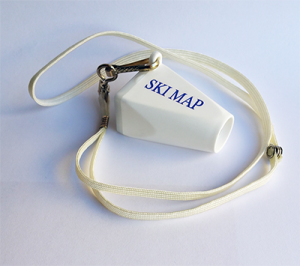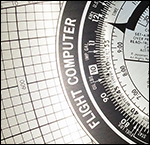We writers live for words. But sometimes, more words are not what you need.
I’ve been fascinated for years by non-traditional types of documentation, vehicles to convey information that are… um… not books or web pages.
Publishers Clearinghouse is known for expertise in direct mail marketing. Opening an invitation from Publishers Clearinghouse is like opening a Christmas present. There is a cover letter. A response form. Pleas from various quadrants of the subscription spectrum. Color catalogs of magazines for your delectation. Stickers for Yes, and stickers for No, that you must affix to your response form. Gold seals for discounts. The tactile and involvement factors are off the charts. They have developed solicitation to a high and emotional art.
Now, I think we can agree that documentation is not a high and emotional art. In particular, software documentation can be a soulless intellectual wasteland. At most, you may click a mouse button or press a keyboard key. There may be a video. It is not tactile and not involving, and hardly emotional — unless something breaks, when it becomes very emotional.
So, what can we do to change that, hmmm?
Poor man’s VR
This little viewer (technically, a loupe) contains the ski trail map for a Lake Tahoe resort. You peer through it to see the map. There’s a lanyard for around your neck.

Ever skied with a paper trail map? They’re great in the lodge, but when you’re on an open lift dangling fifty feet over a rock-strewn gorge with a five-knot wind blowing, and your gloves are soaked, tugging that paper trail map out of a pocket is a special kind of fun.
But this! Just yank it out by the lanyard and take a gander. It’s never soggy. It’s tied around your neck — you can’t drop it into that rock-strewn gorge. It won’t blow away. You don’t need to take a glove off and risk dropping it down into that rock-strewn gorge, either.
How can we bend this trinket to documentation?
It’s not a computer that can display a variety of images. It’s pretty much a one-trick pony. But it could hold a cheat-sheet for a complex computer program. Or imagine a loupe that you can see through. Inside, there is a map to a particularly intricate printed circuit board, all labeled. You look through the viewer to the board… and all the parts are named, and areas of the board are color-coded. Now, imagine examining that board at the top of a 500-foot radio mast…
That’s an extreme example, but in certain situations, that one trick might be enough — one eye through the loupe and the other eye on reality. And there’s branding…
Out of the Wild Blue Yonder
This is an E6B flight computer. Wikipedia explains that it’s one of the last slide rules in regular daily use in the 21st century.

Pilots use the E6B to calculate wind speeds, compass headings, fuel usage and other necessary butt-saving information. Yes — pilots have real computers for those tasks, but students have to learn the basics, and the E6B has been handling things very well, thank you, since 1930.
I don’t propose that you hand out E6Bs to your clients and prospects. (Unless, of course, you’re an aviation company.) It’s the idea of a rotating scale, little windows that allow you to select from among several options, and a slide that reveals the correct selection from among a set of possible results. That combination intrigues me no end.
Do I have an application in mind? Hmmm. I’ve thought of a couple, but they’ve turned out to be too complex for my simple-minded version of an E-6B — and the point of documentation is to make understanding easier, not more complex. I continue to live in hope. One fine day I will pull my trusty E6B out of its case, and the Board of Directors will gasp with the appropriateness of my solution.
A guy can dream.
It’s from the nuclear industry but it doesn’t glow in the dark
Murphy may have been an optimist, but the nuclear industry believes in being as prepared as possible. To this end, they created event cards.
Event cards do not detail the dates of the next three country club dances, but each one lists a different possible situation (event) and tells how — exactly — to deal with it. Reactors operate at the speed of light, or near enough to it. The time for figuring out what you’re going to do is long before you need to figure out what you’re going to do.
The idea of prescribing ahead of time what to do in foreseeable situations sounds to me like something that can be applied to any number of products, business units, companies, and industries. PR departments are often prepared with pre-written news releases for catastrophic events that might strike the company. How other departments may react is often left to chance.
Event cards are not only for catastrophes. System troubleshooting or even a particularly difficult-to-manage computer program might have some kind of event card set to help users identify and handle specific condition sets.
Could an event card set be implemented on a computer? Of course… but what will you do if the event you must respond to is that all the computers have stopped working?
These three solutions are all in search of the exact right problem to anoint them with the glory and success they deserve, but I suspect that there are a lot of similar solutions out there that can be repurposed in ways that solve real and valuable documentation problems.
I’m currently thinking about cafeteria placemats…


